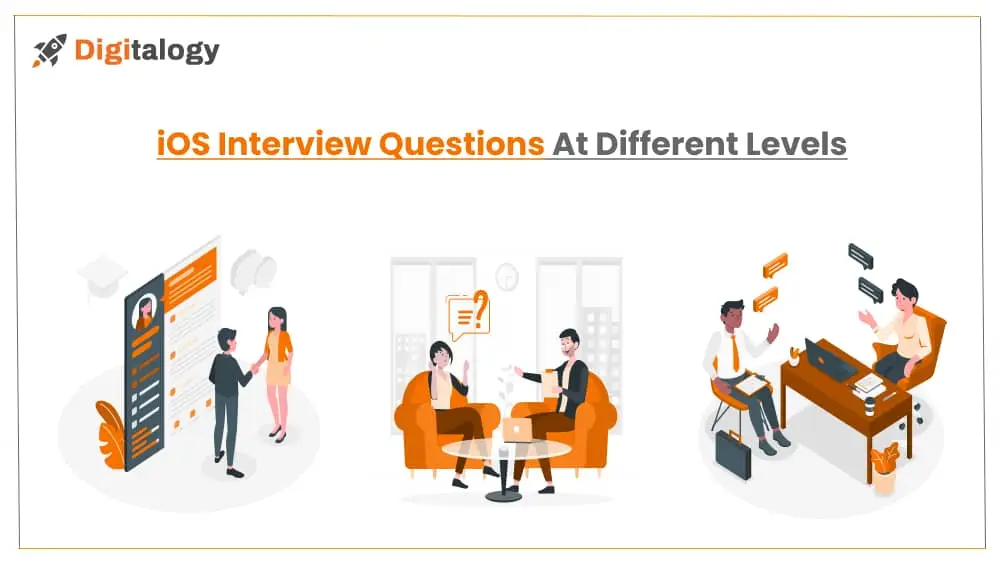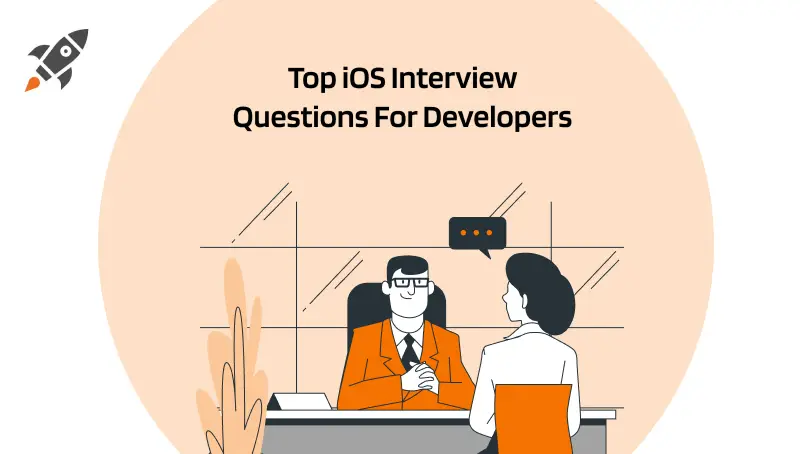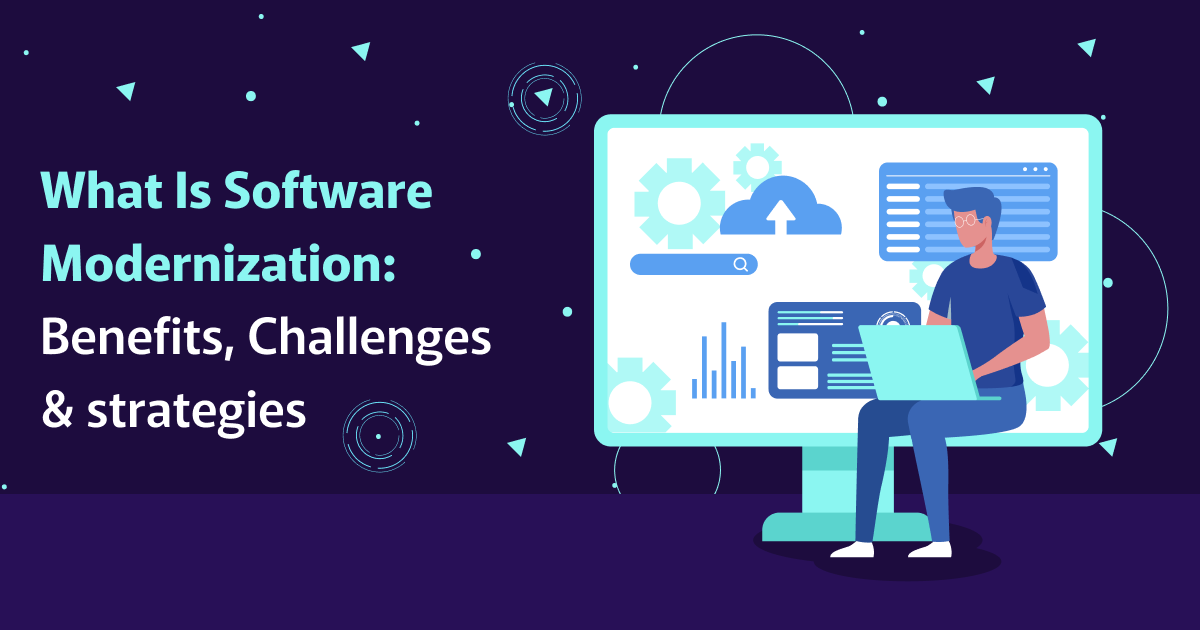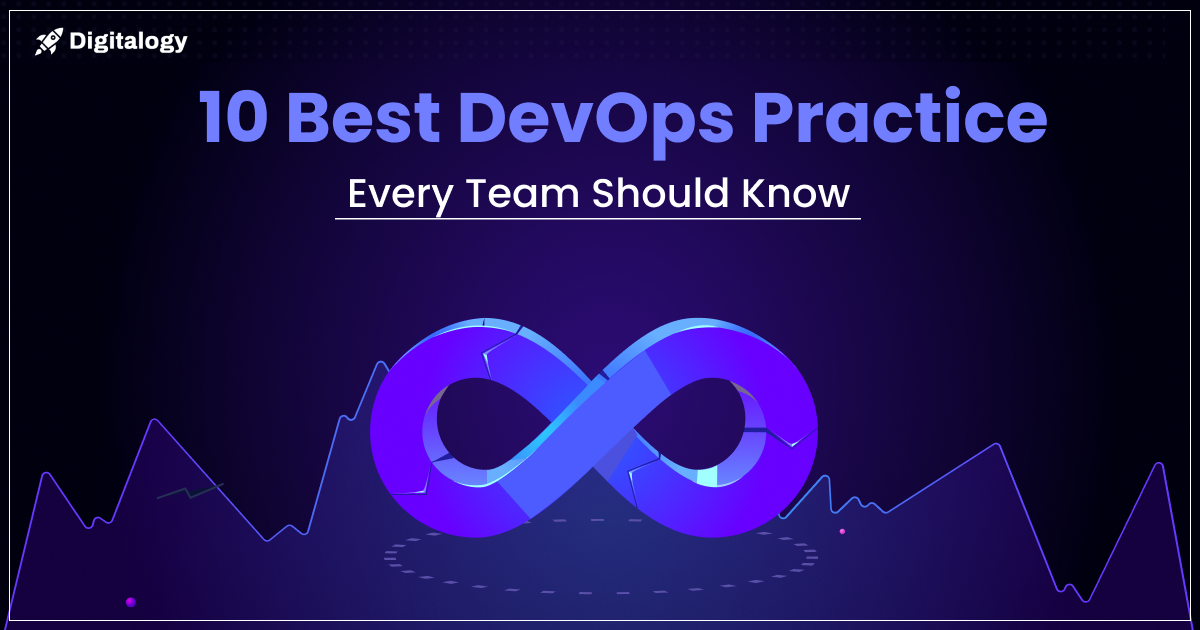If you are an iOS developer and want to crack a tough interview, this is the article for you. In this article, we highlight the top iOS interview questions at different levels of professional environment.
In the era of mobile applications, software development is a major sector of IT and technology. Many businesses have taken the mobile-first approach and created applications for different operating systems.
In today’s time, dedicated developers who have expertise in leading operating systems are in high demand. With the advent of Apple, the rise of iOS applications has also come through.
iOS developers are recruited by leading software development companies and have high-paying jobs.
Roles & Responsibilities Of An iOS Developer
iOS developers need to understand how iOS applications work on different devices and interfaces. The developers have to be familiar with iOS development frameworks that are used for application development.
For example, the developer has to design and build iOS applications for iOS devices like Apple Watch, iPhone, etc. The developer maintains the integrity of the code so that the application performs well in different conditions and traffic.
Here are some of the responsibilities that an iOS developer has to take up:
- He/She has to look at the maintenance of the code and the fixing of bugs too. Further application updates are coded by the iOS developer too.
- He/She should also have the foresight to estimate the problems and risks of the development project so that they can be addressed in the process.
- He/She should be adept at application testing and bug fixing for the maintenance of the application performance.
With over 2.22 million apps available on the iOS system, the market for iOS applications is expanding. The current market and future of iOS application development are bright.

Top iOS Interview Questions For Beginners
If you are a fresher in the iOS development field and want to join an entry-level job, these are the iOS interview questions you should prepare for.
| Explain the architecture of iOS. | The architecture of iOS is layered in nature. The iOS architecture has four layers and is very complex. Each of the layers can be adapted for the application programming code and act as a framework for applications running on top of the hardware. These multiple layers of architecture increase the security and communication levels of the applications. The top layer is Cocoa Touch, then the layer of Media Services, then Core Services, and then Core OS interacts with the iPhone Hardware. |
| What is ARC? | ARC is the Automatic Reference Counting compiler-level feature that defines the process of managing the lifetime of objects in Objective C for iOS applications. |
| Define what cocoa touch is. | Cocoa Touch is an interface that is used to build software code to run on iOS for the iPad and iPhone. It is the layer of iOS application architecture that is written in Objective C language. |
| What are the properties of iOS? | Properties are basic values that are associated with a class, struct, or enum. These variables are sub-variables or parts of objects that are integrated into the various elements of iOS applications. There are different types of properties like Stored properties and compound properties. Stored properties are used to store constant or variable values, which is done by classes and structures. Compound properties are the properties that can be used to calculate the values instead of storing them in the structures and classes of the object sub-variables. |
| What do you mean by Memento Pattern? | A memento pattern happens when you can save stuff in the design. The design pattern from Memento is an externalized structure that can be later restored easily and maintains the privacy rules of the iOS system. The Memento pattern is used for different purposes and can be used for state restoration. |
| What are the different types of iOS application states? | Before the application is ready for its performance run, the application code goes through multiple states. These states indicate the state of execution for the code. The not-running state shows that the application code has not been launched and or has been closed by the system. The inactive state shows that the app is leaving the not running state and entering the active state. The app runs in the foreground but does not accept user input. The next stage is the active state. The active state is the app running in the foreground and receiving events. The user interface is used by the user in the active state. The background state shows that the user interface is hidden and the user is not actively using the app, but it is running in the background. The suspended state is the last state where the app is running in the background, but it does not run the code. |
| What do you mean by deep linking? | Deep links are used to send the users of an app to the app directly instead of a website or an app store for downloading the app. Apple is using deep links to link the web page and the app in the same link so that you can access the app from a universal link. The deep link is a clickable link that directly opens up the app and leads you to the resource you want to access on the app. Deep links make navigation and usage easy as the interface becomes shareable. These links improve the user experience for the users. |
| What is GCD in iOS application development? | GCD, or Grand Central Dispatch, is a low-level API of the iOS interface that runs tasks concurrently and manages multiple threads in the background. The GCD is the function that builds parallel interfaces and multitasking into the iOS application you develop. The GCD function has been a part of the iOS system since the launch of the iOS 4 system. |
| What are the programming languages that you can use for the development of iOS applications? | You can use HTML 5, .NET, C, and Swift to create iOS applications on the iOS operating system. Other languages, such as JavaScript, and Objective C, are also used for iOS development. |
Top iOS Interview Questions For Mid-Level iOS Developers
For mid-level positions for skilled iOS professionals, you can take up the practice of these questions and answers.
| Which framework is used for iOS application interface development? | There are many frameworks there to create the user interface of iOS applications. The UIkit is specifically designed to create the interface for iOS applications. The UI kit is used to develop the graphical interface and other visual elements of the iOS applications. The Event handling part, the user interface, and the app structure all of it is created with the help of the iOS UI Kit. |
| State the difference between App ID and Bundle ID. | Bundle IDs are unique identifiers of applications in the Apple Ecosystem. The Bundle ID is different for two different applications. The bundling ID is used for both the OS X Apps and iOS apps. The system is used to identify app updates. App ID, on the other hand, is the identification tag that identifies apps made by the same development team. The App ID consists of the Team ID and the Bundle ID. |
| Write the difference between assigning and retaining keywords of Apple iOS. | The Assign Keyword is a reference created from one object to another without increasing the retain count of the source. Retain keyword is used to create a reference for an object from another object of the coding cycle but increases the retain count of the source. |
| Explain the functions of Objective C. | Objective C was created in the 1990s for the coding of applications. It has been used by Apple for decades as an object-oriented programming language. This programming language combines the advantages of two earlier languages- C and Smalltalk. The meta classes, with the help of Objective C, are automatically created and managed during runtime. The language also supports dynamic typing and static typing. The language is easy to understand and can be used to create iOS applications very easily. |
| What are the Data types of Objective C? | There are many data types of Objective C. These data types are BOOL, NSInteger, NSUInteger, NSString, etc. |
Top iOS Interview Questions For Experienced iOS Developers
Experienced iOS developers are asked questions based on their experiences and skill set. These are some of the common questions that you might get asked as an experienced professional.
| How does memory management happen in Swift? | The iOS platform uses ARC or Automatic reference counting for the management of app memory usage in the device. The underlying process avoids the need for manual or direct memory management. ARC depends on the clarity of relationships and dependencies inside the code to improve its effectiveness. |
| What are the usual design patterns for iOS app development? | There are some core competency design patterns that we can use to create iOS apps. These design patterns are recommended by the leading frameworks. The design patterns include Delegate, MVC, Observer, and Singleton. With the help of these design patterns, we can handle both the UI and backend development of the apps. |
| What type of version control system will you use for iOS development? | There are many version control systems that can be used for iOS development. Git is a good version control system to use to visualize and change different app versions during the development phase. |
| What are the top tools you use for iOS app development? | There are many iOS app development tools that are used in today’s time. For example, App Code, Sketch, and Xcode are some of the tools that help developers quicken the pace of development. Another tool that is noteworthy and easy to use is Zeplin. |
| How do you do debugging of an iOS app? | An app developer has to know about the tools and techniques of app debugging. There are many modern tools like Xcode that debug apps on the iOS platform. Xcode’s debug navigator takes you through the different issues that can arise with the app and debug it systematically. Xcode is a good tool to use for debugging because it gives insights into more than just code errors inside the app. The developer can review different metrics of app performance on the Xcode navigator. You can monitor the variables at the breakpoints and debug more efficiently. |
Conclusion
There are many job opportunities on the iOS development scene, and you can easily score a job if you have the required skills and knowledge. You should not only possess the skills but also display them during crucial interviews. Before an interview, review what you know and what you need to know for the position.
Brush up on your basic knowledge base and know how to answer trick questions. Often the simplest questions baffle us. The best way to tackle such questions in interviews is to stay prepared. Answer in a calm manner and also showcase that you have the eagerness to learn. Remain professional in your language, skills, and explanations.







